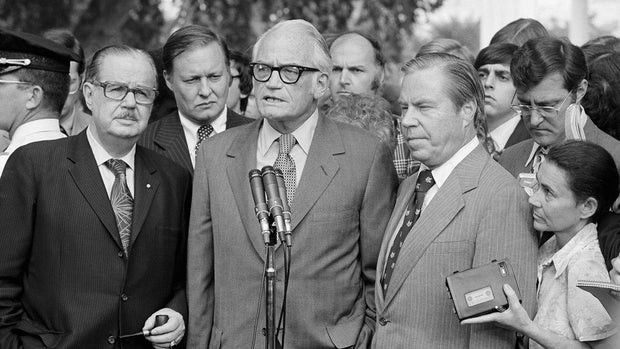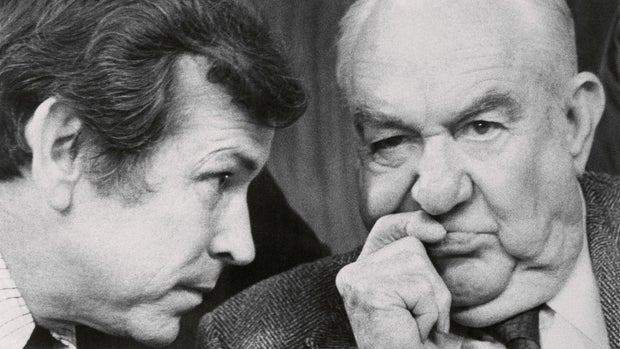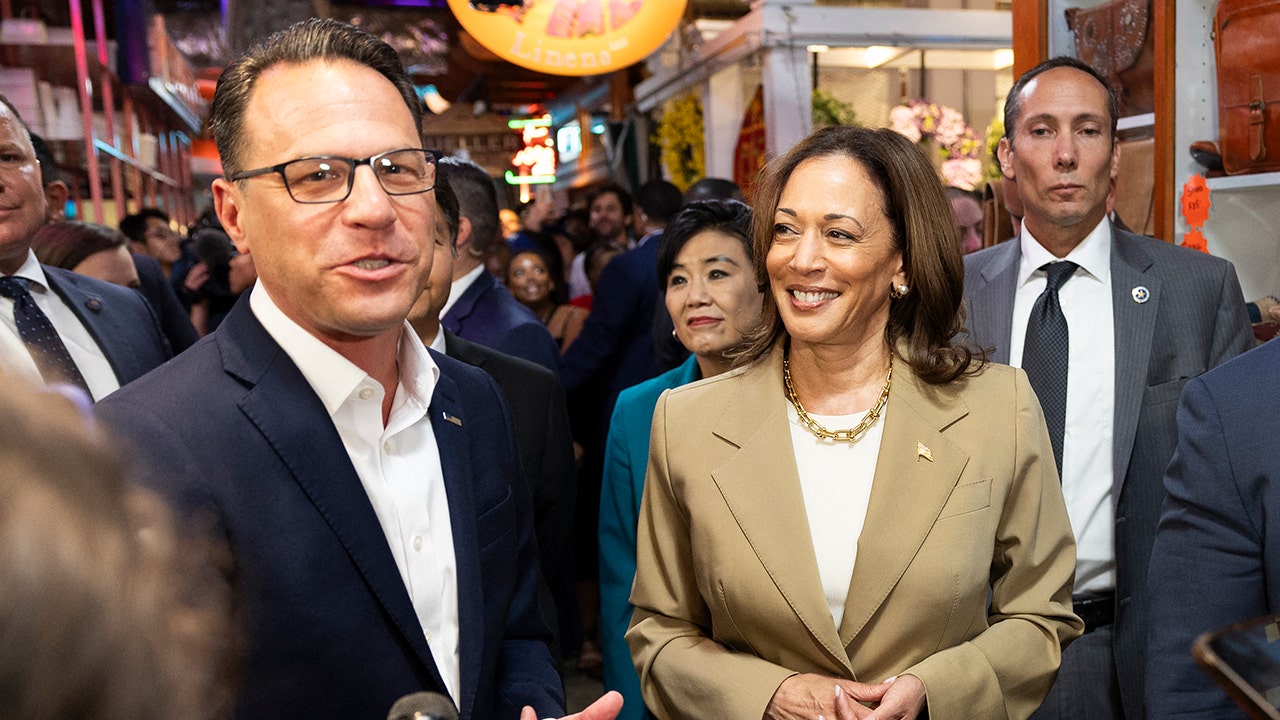Washington
Democratic dark money fuels ‘nonpartisan’ climate group behind swing state ads – Washington Examiner

In its own telling, Science Moms is a “nonpartisan group of scientists” working to fight climate change. Science Moms is spending $2.5 million on a new advertising campaign about “unnatural disasters” in Pennsylvania, Wisconsin, Arizona, and other swing states until Sept. 30 in the lead-up to the November elections.
“If you knew this was your last, best chance to protect all the places you love, what would you do?” says a narrator in the ad, which is called “Climate change is taking the places we love.”
But while Science Moms appears to position itself as apolitical and grassroots, it actually shares a connection to Arabella Advisors, a consulting firm that doubles as the largest Democratic-aligned dark money network in the United States. Science Moms is not a stand-alone entity. Rather, it’s an initiative of the Potential Energy Coalition, a former project of an Arabella-managed dark money group called the Windward Fund, tax records show. The Windward Fund, which finances the Potential Energy Coalition, is bankrolled by the likes of George Soros, Bill Gates, Mark Zuckerberg, and other billionaires.
The relationship between the Windward Fund in Washington, D.C., and Science Moms illustrates how complex tax laws serve to obscure where nonprofit organizations often derive their assets. Arabella has long argued that it merely provides administrative, human resources, and accounting services to independently run groups, though its billion-dollar network is, in many ways, unique due to its scope and sprawling usage of fiscal sponsorship. This legal arrangement allows Arabella-linked projects to shield their backers from the IRS, which does not require sponsored projects to submit separate financial disclosures.
Arabella-managed entities, including the Windward Fund, were recently accused by the Right of illegally enriching the consultancy’s founder, Eric Kessler. The Washington, D.C., attorney general’s office closed an investigation into Arabella this year — to the ire of conservatives who say its network violated federal rules in appearing to, in some cases, exert control over other groups.
The Potential Energy Coalition spun off from the Windward Fund in October 2020, according to documents on file with the IRS.
In 2022, the Windward Fund granted over $13 million to the PEC, which received a $4.5 million grant from the left-wing dark money group in the preceding tax year. But earmarked grants aren’t the only connection between the Windward Fund and the PEC, which is based in New York City and calls itself “an innovative, fast-growing startup that brings the very best marketing talent in the world to bear on the climate challenge.”
The Windward Fund has disclosed on its tax forms that it paid $950,000 to the PEC in 2021 as an “independent contractor,” and a million dollars in 2020 under this same category. And the PEC, on its own financial disclosures, said in 2020 that its board chairman and secretary were “employed by the Windward Fund,” adding, “their salaries are paid by and reported” by the Windward Fund on its separate tax forms.
The Windward Fund declined to respond to sets of questions about these grants and payments, insisting it does not have an active relationship with the PEC or its Science Moms project. The Capital Research Center found in an April report that some of the largest donors to the Windward Fund from 2019 to 2022 were the William & Flora Hewlett Foundation, which funds abortion-rights causes, the Tides Foundation, and the David and Lucile Packard Foundation.
Soros’s Foundation to Promote Open Society gave a million dollars to the Windward Fund in 2022 for its Amplify Rural Voices project. The Bill and Melinda Gates Foundation gave $6 million to the Windward Fund in 2023 for “public awareness and analysis” as well as “agricultural development,” grant records show. Another grantee, the Chan Zuckerberg Initiative, steered $7 million in 2022 and 2023 to Windward Fund projects.
“Windward Fund is a fiscal sponsor to a number of organizations, not a funder, which means we provide administrative support including payroll and HR to new nonprofit projects, many of which later become fully independent organizations,” a spokesperson for the Windward Fund told the Washington Examiner.
To Hayden Ludwig, a researcher often credited with unearthing key information about Arabella Advisors and its offshoots, the consultancy is adept at “keeping the public in the dark” about its influence.
“People need to understand this kind of ugly deception campaign is the norm on the professional Left,” said Ludwig, research director for Restoration of America, a conservative advocacy group. “This is how the Swamp works.”
CLICK HERE TO READ MORE FROM THE WASHINGTON EXAMINER
Alec Sears, a Republican political strategist who works in the digital ad space, agreed.
“Any group with ties to Arabella Advisors is no grassroots organization,” Sears said. “Dark money ad buys in swing states are a strategy designed purely to drive the political agenda of the billionaires behind Arabella and its funds.”

Washington
Washington attorney general and sheriff who helped nab Green River Killer fight for governor's seat
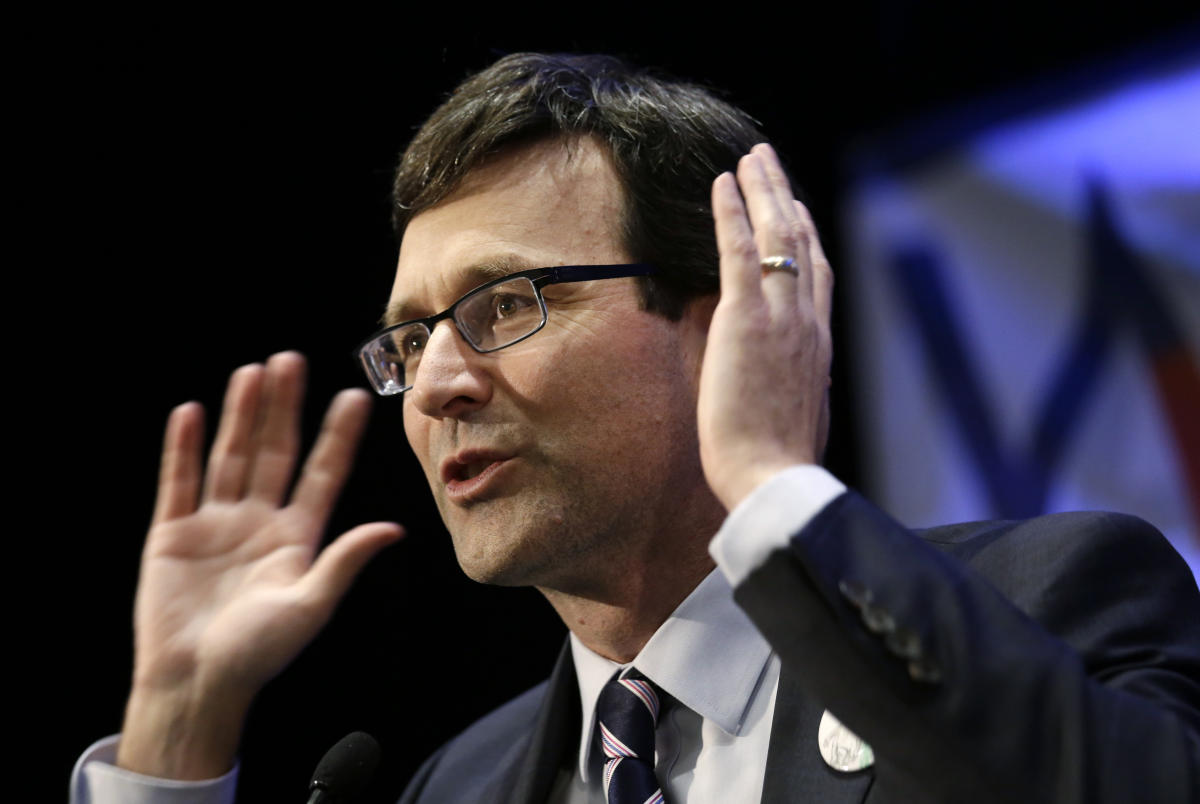
SEATTLE (AP) — Washington state’s longtime attorney general and a former sheriff known for his work hunting down the Green River Killer are vying to become the next governor of a Democratic stronghold that hasn’t had an open race for the state’s top job in more than a decade.
Democrat Bob Ferguson, who has served as attorney general since 2013, will face former U.S. Rep. Dave Reichert in Tuesday’s primary election in a race that has featured weeks of intense sparring between the two frontrunners in a field of more than two dozen candidates.
Ferguson has framed Reichert, a Republican, as a two-faced candidate whose more moderate rhetoric during this campaign does not align with statements he has made in private or his actions in Congress. Meanwhile, Reichert has painted Ferguson as a candidate who wouldn’t change anything about the state, while providing a continuation of “one-party rule.”
In a state with a long reputation as solid Democratic territory that hasn’t had a Republican governor in nearly 40 years, any conservative candidate faces an uphill battle. But polling shows Reichert not far behind Ferguson and the race is considered competitive.
Under Washington’s primary system, the top two vote getters in each of Tuesday’s races advance to the November election, regardless of party. Experts predict a Ferguson and Reichert matchup in November.
Military veteran Semi Bird also is a key figure in the race after being endorsed by the Washington State Republican Party. But he has become a polarizing figure amid accusations of mischaracterizing his military service, as well as a guilty plea to bank larceny in 1993 for putting his father’s name and social security number on a credit application. Bird said he has not been convicted of a crime since then and regrets what he did.
Democrat Mark Mullet, a state senator from Issaquah, also has garnered attention as a moderate candidate who would bring the perspective of a small business owner.
The success of a Republican candidate in the governor’s race will depend on their ability to build crossover appeal to independent voters and moderate Democratic voters, said Sandeep Kaushik, a Democratic political consultant with Sound View Strategies.
“The only way a Republican can win a statewide race in Washington state is if they convince voters in the middle of the state, who lean blue, that they’re a different kind of Republican and willing to meet those voters halfway, willing to break with MAGA, break with the Republican Party,” he said. “Reichert has done none of that, so far as I can see.”
The campaign between Ferguson and Reichert has consistently focused on abortion. Ferguson’s team often references Reichert’s history of voting for a nationwide ban on abortion starting at 20 weeks of pregnancy as evidence of him being “wildly out of touch with the majority of Washingtonians.”
Abortion has long been legal in Washington until viability, a determination left up to the judgement of a health care provider, and after that in cases where the pregnant individual’s health or life is threatened.
Reichert has pushed back on Ferguson’s characterization and said his only plan for the state’s abortion law if elected governor is to enforce and support it. He accused Ferguson of trying to scare women into not voting for him.
Reichert said as governor he would prioritize public safety, referencing his 33 years and two terms as sheriff at the King County Sheriff’s Office and the dozens of sheriffs who have endorsed him.
He was the first King County detective assigned to the case of the Green River Killer, named for the waterway where the first bodies were found in 1982. Gary Ridgway, who killed 49 women, was arrested and convicted in 2003 during Reichert’s second term as sheriff.
Reichert said he also would focus on curbing homelessness, as the Seattle area has one of the nation’s highest rates of homelessness. He suggested moving people from the streets to state-owned land, including McNeil Island, where a facility for sexual predators is located.
“You tell me which one is more ridiculous: Living under a freeway in tents or maybe making a nice, warm, comfortable place on McNeil Island or Evergreen College,” he told The Associated Press.
Ferguson was endorsed by state Democratic leadership members including U.S. Senate Pro Tempore Patty Murray and Gov. Jay Inslee, the longest serving governor in office in the country, who is not seeking a fourth term. Ferguson points to his record as attorney general, including reaching multimillion-dollar settlements with major opioid entities and standing up to former President Donald Trump.
But Republican state Rep. J.T. Wilcox said people in Washington state may be looking for a major leadership change after three terms of Inslee.
“Presidents usually leave office not at a high point, but at a point when people are sort of ready for them to be gone,” Wilcox said. “I think that that may have happened a little bit with Gov. Inslee. Twelve years, people feel like, ‘OK we’ve had all this, I’m getting tired of all the same rhetoric, maybe it is time for a change.’”
Washington is a vote-by-mail state and many voters have already cast their ballots before election day.
Washington
Wildfires rage in Oregon, Washington: Map the Pacific Northwest wildfires, evacuations
WA wildfires latest: Tracking smoke and scorched acres
The Miners Complex fires, Pioneer Fire, and Easy Fire are on our radars.
Fox – Seattle
The Pacific Northwest faces a multitude of major fires, blanketing the region in smoke and evacuation notices.
More than 1 million acres have burned in Oregon and in Washington, Governor Jay Inslee issued an emergency proclamation for the state Friday
There are 32 major fires across Oregon and Washington that are less than 99% contained as of Sunday morning, according to a Northwest Interagency Coordination Center report.
Over 9,000 people are under an evacuation notice in Oregon, with an estimated 1,251 people under a level three notice that advises residents to leave the area immediately, according to the Oregon Office of Emergency Management.
Here’s what you need to know about some of the major fires in the Pacific Northwest.
Oregon fire map
Durkee Fire
The Durkee Fire has burned just under 295,000 acres in eastern Oregon and is 80% contained as of Sunday morning, according to the NICC report. The nearby Cow Valley fire is 99% contained after burning 133,490 acres.
The Thompson Fire continues to burn to the northeast of the Durkee Fire. It has singed over 31,000 acres and is 65% contained, according to the Oregonian’s wildfire tracker.
Falls Fire
The Falls Fire has burned over 145,000 acres in the heart of Oregon. The fire is flanked to the east by the Telephone Fire, which has burned over 50,000 acres.
The combined fires have put over 2,300 people under an evacuation notice, with about 1,700 of those residents under a level-two or level-three notice.
Monkey Creek Fire
The Monkey Creek Fire near the Oregon-Washington border has burned 113,902 in over three weeks. It is 32% contained as of Sunday morning, according to the Oregon OEM.
Over 2,800 people are under evacuation notices caused by the Monkey Creek and surrounding fires.
Washington fire map
Washington fires
The Pioneer Fire has blazed in Washington for just under two months in, charring 35,477 acres in the north of the state. It is 12% contained as of Sunday morning and threatening structures, according to the NICC.
The Swawilla I Fire has burned 53,403 acres in the northeast of the state. It is 85% contained as of Sunday morning.
The Retreat Fire in the southern half of Washington has burned nearly 41,000 acres and is 40% contained as of Sunday morning.
Washington
How Washington has changed since Watergate
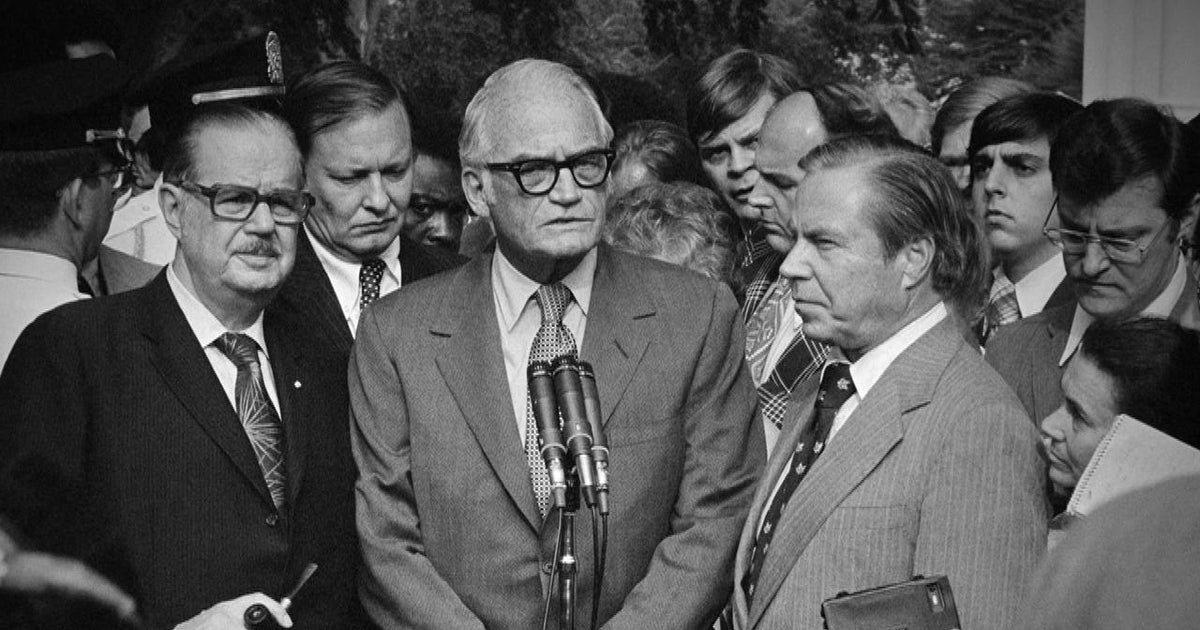
It was President Richard Nixon’s decision, which he announced on August 8, 1974, to leave office. But he had little choice. There was near-total agreement in both parties that he had committed some (or all) of what he was accused of: abuse of power, obstruction of justice, and contempt of Congress.
Fifty years later, would the same thing happen in today’s political climate?
“I really find it hard to believe that Nixon would’ve resigned in an environment like the one we have today,” said Brian Rosenwald. As a lecturer about conservative politics at the University of Pennsylvania, Rosenwald has thought about the what-ifs of the Watergate scandal. Nixon, he said, “would have dug in. He would have had enough support to avoid conviction”.
Up until the very end, Nixon was dug in. The day before he relented, the front page of the Washington Post read, “Nixon Says He Won’t Resign.”
But unlike what we might expect today, Nixon’s party had abandoned him. On August 7, 1974, Senator Barry Goldwater (who had been the last GOP presidential nominee before Nixon) and Republican leaders in Congress visited the White House. Goldwater told reporters outside, “Whatever decision he makes, it will be in the best interests of our country. … There’s been no decision made. We were merely there to offer what we see as the condition on both floors.”
The condition was dire. Republican Congressman John Rhodes said, “Impeachment is really a foregone conclusion.”
The majority of Republicans were likely to vote to impeach Nixon in the House, and there weren’t enough Republican Senators to block his conviction in the Senate.
A day after the meeting, Nixon’s decision led to the iconic Washington Post headline: “Nixon Resigns.”
In the fifty years since that announcement, that White House visit by leaders of the president’s own party telling him his time was over may tell us less about what was happening then, then it tells us about what is happening in our politics now.
“In our modern era, where we’re so cynical about our politics, it’s almost impossible to capture how different the political landscape was in ’72, ’73, ’74,” said Garrett Graff, the author of “Watergate: A New History.” “Even Democrats trust Nixon, because they say, ‘The President would never lie to the American people. We can’t impeach the President. He’s the President! If he is saying he’s not involved in Watergate, he’s telling us the truth.’”
For in August 1973, Nixon told the American people, “I had no prior knowledge of the Watergate break-in.”
No prior knowledge, perhaps … but Nixon had been involved in the cover-up after the burglary and wiretapping of the Democratic National Committee Headquarters, abusing his powers to obstruct the investigation, and defying Congressional subpoenas for evidence.
Proof came from one of the bombshell moments in the Senate Select Committee on Presidential Campaign Activities’ Watergate hearings, when it was revealed by former Nixon aide Alexander Butterfield that there were recording devices in the Oval Office. On one of the tapes: direct evidence against the president.
Graff said, “What comes out is this ‘smoking pistol’ tape, from June 23, 1972, in which Nixon is heard saying, ‘They should call the FBI in and say that we wish for the country, don’t go any further into this case, period.’ It is a recording from the first day that Richard Nixon is back in the White House after the Watergate break-in. And it effectively shows that Nixon was part of the cover-up from the earliest hours.
“Watergate is a story of incredible corruption and criminality,” Graff said. “But to me, it’s actually an incredibly inspirational story of how our system works, and the incredible ballet of checks and balances written into our Constitution. Every institution in Washington had to come together to play a special, and important, and unique role.”
Asked what was a basic shared norm that they believed in in 1974, Graff replied, “Everyone agreed, at that moment, Richard Nixon was not above the law.”
That agreement could be reached because politicians weren’t attached to their parties the way they are today.
Sen. Howard Baker of Tennessee, the top Republican on the Watergate committee, probed for the truth. He didn’t erect obstacles to protect his party’s president, famously asking, “What did the president know and when did he first know it?”
Rosenwald said, “Our electoral politics have changed. In the last half-century we’ve become much more geographically polarized, which means red states and blue states. And the way that manifests today is the most important election for most people are primaries, because that’s the place they can lose. And who shows up for primaries? It is the people consuming ideological media. They’re engaged, and they’re usually far right or far left.”
In Nixon’s day, lawmakers answered to an electorate where voters consumed the same information. Eighty-five percent of U.S. households watched some portion of the Watergate hearings, which featured White House counsel John Dean exclaiming, “I began by telling the president that there was a cancer growing on the presidency.”
“Nixon didn’t think that he was committing crime,” said Graff. “He thought he was the law-and-order president.”
Nixon may have believed it, but there was no pro-Nixon media apparatus to feed that alternative reality to the public during the 784 days between break-in and resignation.
“I don’t think we could see a moment like that happen [today],” Graff said, “because of the media environment. The poisoned information ecosystem that politics now exists in is all but inescapable. If Richard Nixon had Fox News in 1974, he would’ve survived.”
Rosenwald imagines how the political and media developments of our world today would have played out 50 years ago, in response to a “smoking gun” White House tape: “They would’ve said, ‘They’re just getting rid of our guys. They’re getting rid of our champions.’ They would have pointed at all kinds of malfeasance from Democrats and said, ‘Oh, look at those guys still serving, nobody ran them out of office.’ And they would’ve pointed at the media and said, ‘And they did nothing about it. They are out to get you. They hate you.’ And then basically said, ‘Whose side are you on? Are you on the side of your enemy, or are you on the side of your guys?’ Nixon might not be perfect but all of a sudden he’s ‘our guy.’”
“He’s our guy” may capture best the modern instances where lawmakers put party above all else. Though that instinct did not prevail when Democratic leaders convinced Joe Biden to abandon his campaign, it did rule with Donald Trump, when the moral stakes were at Watergate levels.
Just days after the January 6th attack on the Capitol, Republican leaders accused the president of their party of breaking his oath. In a recording made public a year later, House Speaker Kevin McCarthy spoke to his colleague, Republican Congresswoman Liz Cheney, about an impeachment resolution, telling her, “The only discussion I would have with [Trump] is that I think this will pass, and it would be my recommendation you should resign.” And on February 13 [after Trump had already left office], Minority Leader Mitch McConnell told the Senate, “There is no question, none, that President Trump is practically and morally responsible for provoking the events of that day.”
But in the end, there was no White House visit from leaders in Trump’s party. And in 2024, McCarthy has endorsed Trump for president, as McConnell has.
Fifty years after Watergate, the question is not whether a tough-love visit by members of a president’s party is possible. It is. What’s changed is what motivates the lawmakers willing to take the walk.
For more info:
Story produced by Reid Orvedahl. Editor: Ed Givnish.
-

 Mississippi6 days ago
Mississippi6 days agoMSU, Mississippi Academy of Sciences host summer symposium, USDA’s Tucker honored with Presidential Award
-

 Politics1 week ago
Politics1 week agoRepublicans say Schumer must act on voter proof of citizenship bill if Democrat 'really cares about democracy'
-

 Politics1 week ago
Politics1 week agoTrump announces to crowd he 'just took off the last bandage' at faith event after assassination attempt
-
World1 week ago
More right wing with fewer women – a new Parliament compendium
-

 World1 week ago
World1 week agoIsrael says Hezbollah crossed ‘red line’, strikes deep inside Lebanon
-

 World1 week ago
World1 week agoItaly's Via Appia enters the Unesco World Heritage List
-

 Culture1 week ago
Culture1 week agoHe raped a 12-year-old a decade ago. Now, he’s at the Olympics
-

 News1 week ago
News1 week agoSonya Massey death brings fresh heartache to Breonna Taylor, George Floyd activists






